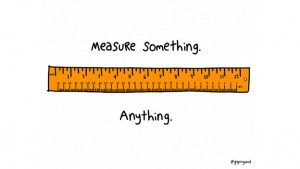— August 28, 2017

geralt / Pixabay
With all the incivility and discontent in our environment today, you’d think the best thing organizations could do would be to remove as much organizational friction, or discord, from their groups as possible.
Certainly, we want to reduce the kind of friction that results in the total inability of employee groups to work together effectively. We also want to avoid the destructive type of engagement that causes dissension between a company and its customers, employees, or suppliers. But there are also times when a little more organizational friction can help increase creativity, drive innovation, and build competitive advantage.
Making Organizational Friction Work
Here are five points to consider when determining whether or not your organization is operating at the right friction point.
1. Friction creates heat, which in turn can help produce innovation.
Friction is the tension that develops when things rub against each other rather than moving smoothly. It’s inevitable in large, complex organizations. Different functions have different backgrounds which can provide much needed perspectives and productive dialogue. But that’s not necessarily a bad thing.
2. Constructive friction can help the bottom line.
When you harness organizational friction in a constructive way, individuals are encouraged to bring diverse inputs, challenge the status quo, and uncover new opportunities. This means that the focus remains on the problem to be solved—not on differences among the individuals involved. The result is increased innovation and improved business results.
3, Unresolved friction creates major dissonance.
When friction is unmanaged or ignored, trouble can arise. Discussions turn into arguments and feedback becomes personal instead of problem focused. Tempers flare and frustration ensures. The result can be high levels of stress, lower productivity, organizational conflict, and higher levels of attrition.
4. A lack of organizational friction creates stagnation and missed opportunities.
While it’s great to see collaboration in organizations, too much focus on unity and agreement can cause people to bury underlying conflicts. This forces compromise and compliance rather than constructive disagreements that may unearth critical problems and even lead to the discovery of potential opportunities.
5. Friction can occur within your organization, among your key constituents, and in the overall environment as well.
We often see friction between the marketing organization and other functions in the organization, such as R&D, sales, or support. These groups may all have the organization’s best interests at heart, but they see things through different lenses. We also see friction occur between a company and its customers, or in the marketplace among competitors. Today, we are seeing a high level of unresolved friction in the US political environment, causing tension and angst, rather than creating the environment for developing new approaches to solving difficult issues.
The key to effectively managing this discord is to look for the right friction point—that point where there’s enough disagreement and discussion to encourage creativity but with the discussion occurring within an environment of mutual respect and a desire to achieve a common goal or vision.
Business & Finance Articles on Business 2 Community
(93)
Report Post





